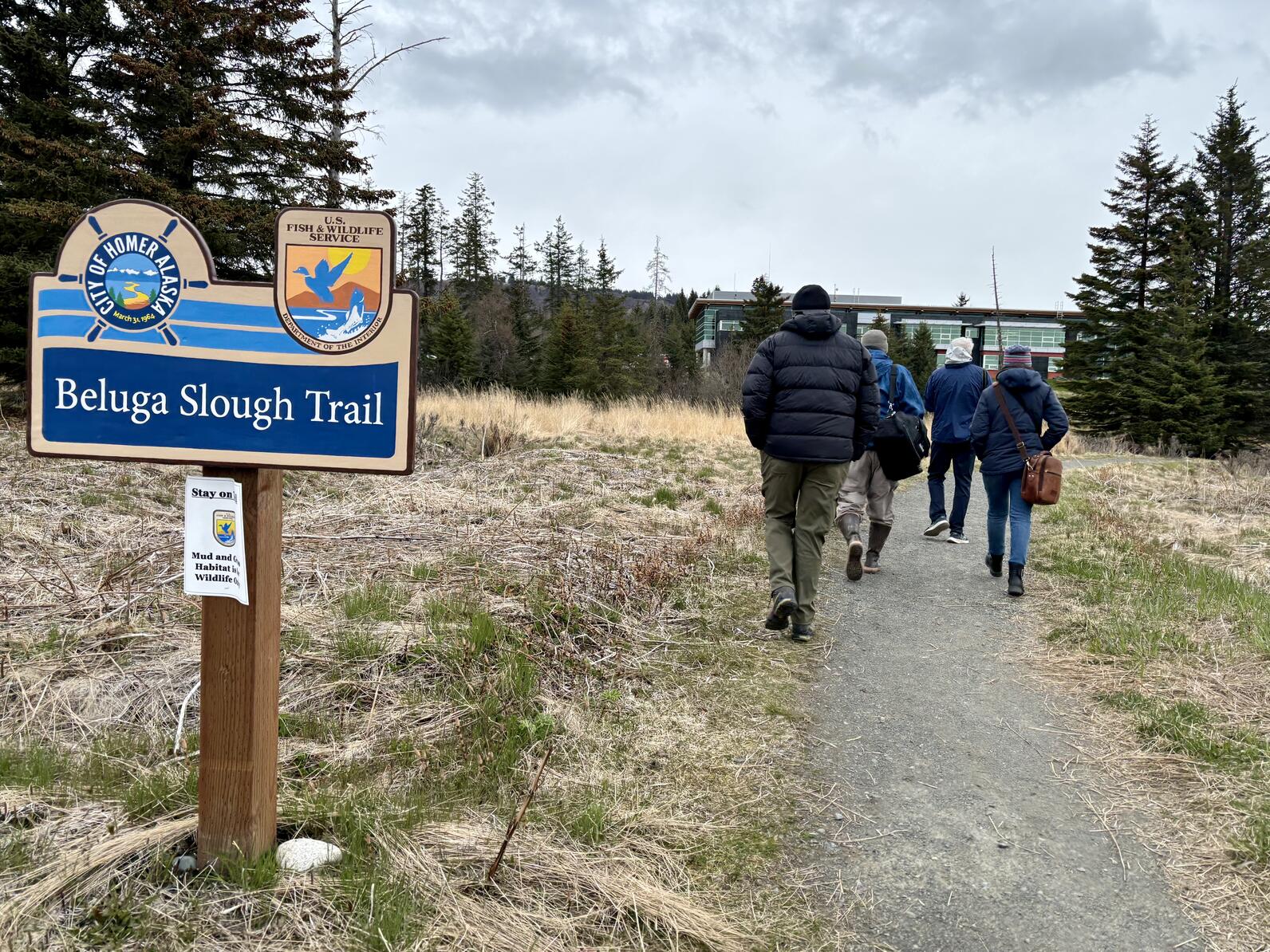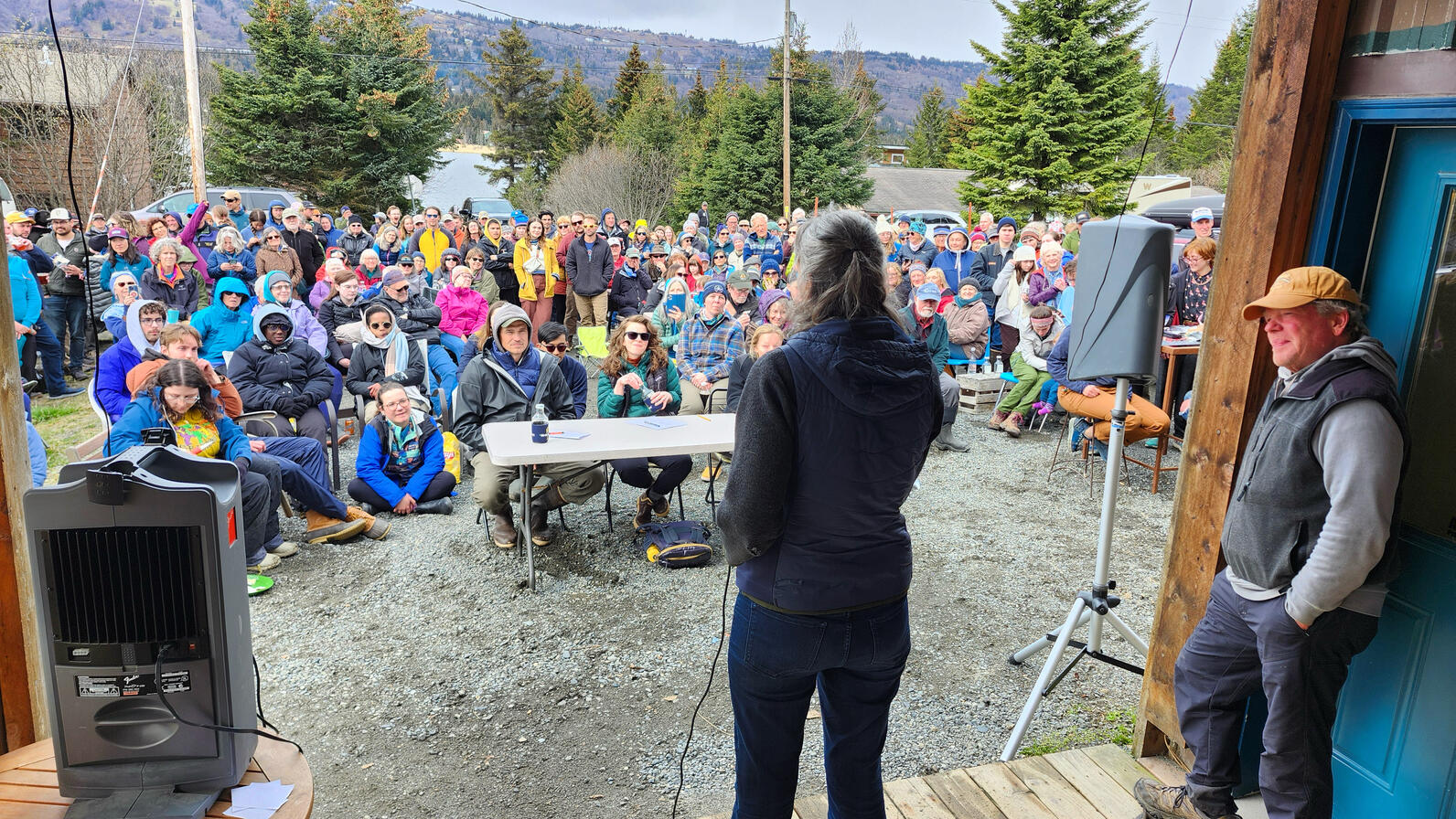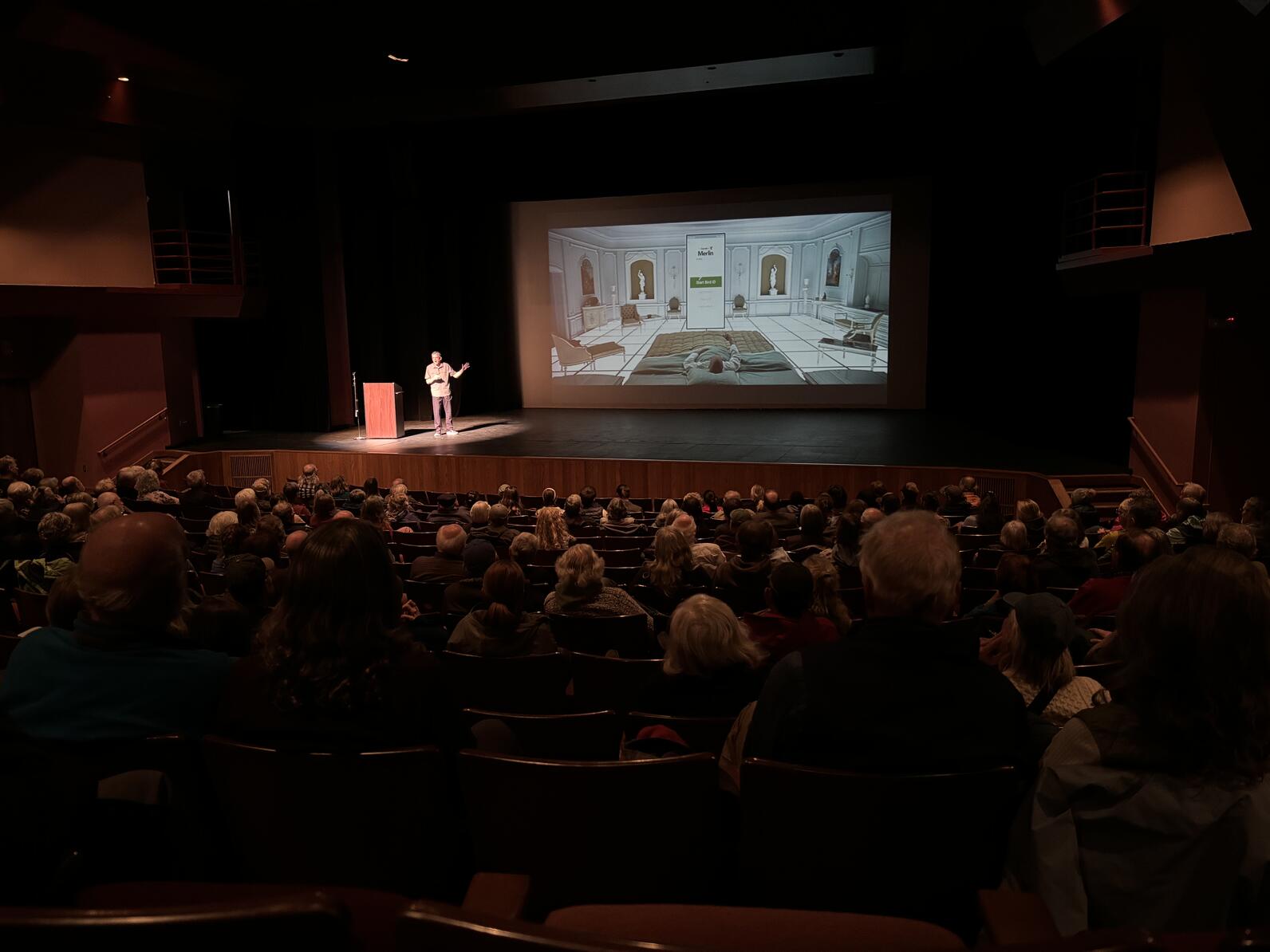Before we talk about birds—and all the lectures, workshops, and opportunities to see them available at the 32nd annual Kachemak Bay Shorebird Festival—let’s talk about how beautiful a drive it is to Homer. Cruising down the Kenai Peninsula through rain, a little snow, and moose country, I actually gasped when I saw the view of Cook Inlet from Ninilchik, and again when I came into Homer proper and gazed upon Kachemak Bay for the first time.
My first night in Homer (every night, in fact) was spent at the Homer Stay & Play—a traditional bed and breakfast operated by Homerites Anna and Byron. There were teapots, books, and Fox Sparrows singing off the balcony (which also had panoramic views of Kachemak Bay and Grewingk Glacier from the aptly named Glacier View Suite).

Thursday was my first full day at the festival. I started strong, joining what was maybe my favorite talk of the entire event—Foggy Origin: Rats in the Aleutian. Lauren Flynn, Wildlife Refuge Specialist with the Alaska Maritime National Wildlife Refuge, gave a fascinating overview of how several islands in Alaska’s Aleutian chain became rat-infested, which has greatly affected seabird populations (more information on that here).
This was followed by a captivating presentation given by Schantz Scholar Adrianna Nelson on her work with birds in Maine and Birding Trivia! at Grace Ridge Brewing. In between, I also took a stroll down the Calvin and Coyle Trail to the Beluga Slough to first bust out of the binoculars. Myself and a small group of festival goers spotted Shovelers, Pintails, Wigeon, Sandhill Crane, Black-legged Kittiwakes, and Yellowlegs (though we couldn’t determine if they were Greater or Lesser).
Afterward, I tooled down the Homer Spit, again amazed at the views, while passing lines of people on the side of the road—scopes and binoculars out—watching murmurations of shorebirds that swooped and dove over my vehicle as I headed down to dinner.
Friday morning, I watched Bald Eagles figure eight out the big window off the breakfast table while chatting with my bed-and-breakfast hosts.

I then rushed to my first class—Documenting Birds in the Digital Era—where we set out to photograph and record birds off the Beluga Slough. We saw and heard 19 species, including the American Crow. White-winged Crossbill, Long-billed Dowitchers, and Tree Swallows. Back inside, keynote speaker and Birding magazine editor Ted Floyd covered everything from image and audio editing to Merlin Bird ID and eBird (where he may have the longest-held contiguous bird-list-making streak on the platform).
The day continued with Bird-friendly Buildings: What You Can Do, Be a Citizen Scientist and Explorer with eBird, Red-necked Phalaropes: Understanding a Unique Shorebird, and Gambell: Birding on the Western Edge. The talk and slideshow focused on Gambell, located on Saint Lawrence Island, was given by Jim Herbert. If there’s one takeaway from this talk, it’s that we at Audubon Alaska are very lucky to have Aaron Lang on our Board (Herbert referred to him as one of the world’s top birders).
Saturday was spent in the Alaska Maritime National Wildlife Refuge auditorium with Shorebird Identification, Tundra Nesting Birds of Arctic NWR, Birding the South Pacific from Australia to Chile, and The Power of Migration—the perfect talk to attend for World Migratory Bird Day.
But I was still able to sneak away to bird on the Homer Spit and Louie’s Lagoon, where I set up the scope and watched a group of Dunlins, Semipalmated Plovers, and other shorebirds scutter. I also stopped by the Beluga Wetlands Overlook, where I saw and heard Northern Pintail, Mallard, Ruby-crowned Kinglet, and Green-winged Teal.

Now came the fun part.
The aforementioned Aaron Lang, Adrianna Nelson, and I got to judge the annual Bird Calling Contest at Homer Brewing Company. There might have been up to 200 rowdy attendees behind us at the judges’ table. Still, our attention was solely focused on the 40-plus participants who gave us everything from a baby chicken to a Wilson's Snipe and more than a dozen Common Ravens. We had five winners. A Black-capped Chickadee duet won the youth category. A very Southern Peacock took home the “unserious” crown. And for the serious category, we had a tie—a Greater White-fronted Goose and a Pacific Golden Plover.
From here we zipped off to the Homer High School Auditorium for Ted Floyd’s keynote presentation—Birding and Nature Study in the Digital Age. Amid the day-of bird imagery and stroll through Floyd’s memories of being a birder since childhood (with the 1984 journal entry to prove it), we were left with a beautiful thought: Birding can take you around the world. This was true for Floyd, who has been from pole to pole for birds, myself (birds have brought me all over Alaska), and I’m sure many others in the room.

I appropriately finished out my trip at the Birder’s Coffee gathering with my bed-and-breakfast hosts Anna and Byron. This would not have been as memorable a trip if it weren’t for their full breakfasts, never-ending supply of coffee and tea, long conversations about birds and books, and their incredibly beautiful 2.5-acre estate.
And if you’d like any food and drink recommendations in Homer, I’d suggest the Fresh Catch Cafe, Boatyard Cafe, La Baleine Café, Two Sisters Bakery, River Cafe, Pho and Thai Restaurant (especially on a rainy/chilly day), and, of course, a couple rounds at the historic Salty Dawg Saloon.









